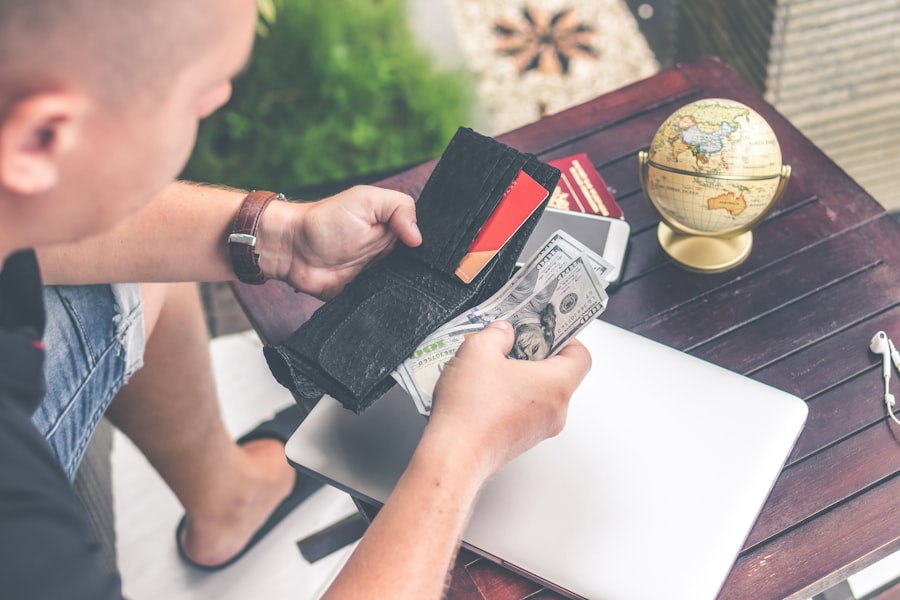Non-fungible tokens (NFTs) are unique digital assets that represent ownership or proof of authenticity of specific items or content, such as artwork, videos, music, or tweets. Unlike fungible cryptocurrencies like Bitcoin or Ethereum, NFTs cannot be exchanged on a one-to-one basis due to their individual uniqueness. NFTs utilize blockchain technology, a decentralized and distributed digital ledger that records transactions across multiple computers.
This technology ensures each NFT’s uniqueness and prevents replication. When created, an NFT is assigned a unique digital signature that serves as a certificate of authenticity and ownership, which is stored on the blockchain for public access and transparency. These digital assets can be bought, sold, and traded on various online marketplaces using cryptocurrency as the medium of exchange.
The blockchain permanently records the ownership and transaction history of each NFT, providing a secure and transparent method to verify the authenticity and provenance of digital assets. In essence, NFTs are unique digital assets built on blockchain technology, ensuring their uniqueness and security. They represent ownership or authenticity of specific items or content and can be traded on online marketplaces using cryptocurrency.
Key Takeaways
- NFTs are unique digital assets that use blockchain technology to establish ownership and provenance.
- Creating your own NFT involves choosing a platform, uploading your digital artwork, and setting parameters for your NFT.
- The hype around digital art and NFTs brings opportunities for artists and collectors, but also raises concerns about environmental impact and copyright issues.
- The growing NFT industry offers various job opportunities, including roles in art curation, marketing, and blockchain development.
- Breaking into the cryptocurrency and NFT market requires gaining knowledge of blockchain technology, networking with industry professionals, and staying updated on market trends.
- Bitcoin and NFTs are interconnected through their use of blockchain technology, but they serve different purposes in the digital asset space.
- The future of digital art and NFTs is expected to involve advancements in technology, changes in market dynamics, and increased adoption by artists and collectors.
Steps to Creating Your Own NFT: A Beginner’s Guide
Deciding on Your NFT Content
The first step in creating your own NFT is to decide what you want to tokenize. This could be digital artwork, music, videos, or any other form of digital content. The possibilities are endless, and the choice ultimately depends on your creativity and goals.
Choosing a Blockchain Platform and Digital Wallet
Once you’ve decided on your content, you’ll need to choose a blockchain platform to create and sell your NFT. Ethereum is currently the most popular platform, but other options like Binance Smart Chain and Flow also support NFT creation. After selecting a platform, you’ll need to create a digital wallet to store your cryptocurrency and NFTs. This wallet will be used to buy, sell, and store your NFTs.
Minting and Listing Your NFT
With your platform and wallet in place, you can mint your NFT, which involves creating a unique digital token on the blockchain that represents your content. This process typically involves paying a gas fee, a transaction fee paid to miners to process and validate the transaction on the blockchain. Once your NFT is minted, you can list it for sale on various online marketplaces that support NFT trading.
Getting Started with NFT Creation
While the process of creating an NFT may seem daunting at first, there are plenty of resources and tutorials available to help beginners navigate the world of NFT creation. With a little practice and patience, you can create your own unique NFT and start selling it online.
The Truth Behind the Digital Art Hype: Exploring the Pros and Cons of NFTs

The rise of NFTs has brought about a surge in interest in digital art, but what are the pros and cons of this new trend? One of the main advantages of NFTs for digital artists is the ability to monetize their work in a new and innovative way. By tokenizing their art as an NFT, artists can sell their work directly to collectors without the need for intermediaries such as galleries or auction houses.
This allows artists to retain more control over their work and potentially earn higher profits from their sales. On the other hand, there are also some drawbacks to the NFT craze. One of the main criticisms of NFTs is their environmental impact, particularly in the case of platforms like Ethereum, which require a significant amount of energy to process transactions.
Additionally, there are concerns about the speculative nature of the NFT market, with some critics likening it to a bubble that could burst at any moment. There are also issues surrounding copyright and intellectual property rights in the world of NFTs, as it can be difficult to verify the original creator of a piece of digital content. In conclusion, while NFTs offer new opportunities for digital artists to monetize their work, there are also potential drawbacks such as environmental impact, speculation, and copyright issues.
As with any new technology or trend, it’s important to weigh the pros and cons before diving headfirst into the world of NFTs.
NFT Jobs: Opportunities in the Growing NFT Industry
The growing popularity of NFTs has created new job opportunities in various fields related to digital art, blockchain technology, and cryptocurrency. One of the most obvious job opportunities in the NFT industry is for digital artists who can create and sell their work as NFTs. This allows artists to monetize their creations in a new and innovative way, without relying on traditional art market channels.
Additionally, there is a demand for developers and engineers with expertise in blockchain technology to build and maintain NFT platforms and marketplaces. Another area of opportunity in the NFT industry is for marketers and sales professionals who can help promote and sell NFTs to collectors and investors. As the market for NFTs continues to grow, there is also a need for legal experts who can navigate the complex legal issues surrounding copyright, intellectual property rights, and contracts in the world of NFTs.
Finally, there are opportunities for entrepreneurs who can create new businesses and platforms that cater to the growing demand for NFTs. In summary, the rise of NFTs has created job opportunities for digital artists, developers, marketers, legal experts, and entrepreneurs. As the market continues to evolve, there will likely be even more opportunities for professionals with skills and expertise in digital art, blockchain technology, and cryptocurrency.
Crypto Jobs: How to Break into the Cryptocurrency and NFT Market
Interested in breaking into the cryptocurrency and NFT market? Here are some tips for getting started in this rapidly growing industry. The first step is to educate yourself about blockchain technology and cryptocurrency by reading books, taking online courses, and following industry news and trends.
Understanding the fundamentals of how blockchain works and how cryptocurrencies are traded is essential for anyone looking to enter this field. Once you have a solid understanding of blockchain and cryptocurrency, you can start building your network by attending industry events, joining online communities, and connecting with professionals in the field. Networking is crucial for finding job opportunities and staying up-to-date with the latest developments in the industry.
Additionally, gaining practical experience through internships or freelance projects can help you build a strong resume and demonstrate your skills to potential employers. Finally, it’s important to stay adaptable and open-minded as the cryptocurrency and NFT market continues to evolve rapidly. Being willing to learn new skills and adapt to changes in the industry will make you more competitive in this fast-paced field.
In conclusion, breaking into the cryptocurrency and NFT market requires education, networking, practical experience, and adaptability. By following these tips, you can position yourself for success in this exciting and dynamic industry.
BTC and NFTs: The Relationship Between Bitcoin and Non-Fungible Tokens

Understanding the Difference
Bitcoin and non-fungible tokens (NFTs) are two distinct elements within the broader cryptocurrency ecosystem. While Bitcoin is a fungible digital currency that can be exchanged on a one-to-one basis like traditional money, NFTs are non-fungible tokens that represent ownership or proof of authenticity of specific digital assets.
Shared Use of Blockchain Technology
One way in which Bitcoin and NFTs are connected is through their shared use of blockchain technology. Both Bitcoin and NFTs rely on blockchain as a decentralized and distributed ledger that records transactions across multiple computers. This technology ensures transparency, security, and immutability for both Bitcoin transactions and NFT ownership records.
Interconnected through Payment and Market Impact
Additionally, many NFT marketplaces accept Bitcoin as a form of payment for purchasing non-fungible tokens. Another connection between Bitcoin and NFTs is their impact on the broader cryptocurrency market. The rise of NFTs has contributed to increased interest and investment in cryptocurrencies overall, including Bitcoin. As more people become involved in buying, selling, and trading NFTs using cryptocurrency as the medium of exchange, this has led to greater adoption and mainstream acceptance of Bitcoin and other digital currencies.
NFTs and the Future of Digital Art: What to Expect in the Coming Years
The rise of non-fungible tokens (NFTs) has sparked significant changes in the world of digital art, but what can we expect in the coming years? One potential development is the continued growth of online marketplaces dedicated to buying, selling, and trading NFTs. As more artists embrace this new way of monetizing their work, we can expect to see an expansion of platforms that cater specifically to the needs of digital artists and collectors.
Another trend that may emerge in the future is greater integration between physical art and NFTs. Some artists have already begun exploring ways to link physical artwork with digital tokens as a way to provide provenance and authenticity for their pieces. This trend could lead to new opportunities for artists to create hybrid physical-digital art experiences that appeal to collectors who are interested in both traditional art forms and digital assets.
Additionally, we may see increased regulation and standardization within the world of NFTs as governments and industry organizations seek to address issues such as copyright infringement, intellectual property rights, and environmental concerns related to blockchain technology. This could lead to greater transparency and accountability within the NFT market, making it more accessible and trustworthy for artists and collectors alike. In conclusion, the future of digital art in relation to non-fungible tokens (NFTs) holds exciting possibilities for continued growth in online marketplaces, greater integration between physical art and digital tokens, and increased regulation within the industry.
As this trend continues to evolve, it will be important for artists, collectors, and industry professionals to stay informed about developments in order to navigate this rapidly changing landscape effectively.
FAQs
What is an NFT?
An NFT, or non-fungible token, is a digital asset that represents ownership or proof of authenticity of a unique item or piece of content, such as digital art, videos, music, or other digital files.
How do I make an NFT?
To make an NFT, you will need to choose a blockchain platform that supports NFTs, such as Ethereum, and create a digital wallet to store your cryptocurrency. Then, you can use an NFT marketplace or platform to mint your digital artwork or content into an NFT by following their specific guidelines and paying any associated fees.
What do I need to make an NFT?
To make an NFT, you will need a digital wallet to store cryptocurrency, a digital file of the artwork or content you want to mint as an NFT, and access to a blockchain platform that supports NFTs, such as Ethereum.
How much does it cost to make an NFT?
The cost of making an NFT can vary depending on the blockchain platform and marketplace you choose to use. Minting an NFT typically involves paying a gas fee, which can fluctuate based on network activity and the blockchain platform’s current fees.
Is making an NFT environmentally friendly?
The process of minting NFTs on certain blockchain platforms, such as Ethereum, has raised concerns about its environmental impact due to the energy consumption associated with blockchain transactions. It’s important to consider the environmental implications when creating NFTs and to explore alternative blockchain platforms with lower energy consumption.
What are the benefits of making an NFT?
Making an NFT can provide artists and creators with a new way to monetize their digital artwork and content, as well as establish ownership and authenticity through blockchain technology. NFTs also offer the potential for royalties on secondary sales, providing ongoing income for the original creator.





